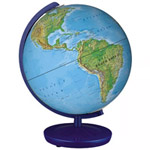Global Integrative Studies, School of
Date of this Version
4-25-2004
Document Type
Article
Citation
NORSEC 15 (April25, 2004)
NORSEC Laboratory Report, number 15 (April 25, 2004)
product of the National Science Foundation Arctic Social Sciences Research Experience for Undergraduates Program and the North Atlantic Biocultural Organization (NABO) and the Leverhulme Trust Project Landscapes Circum Landnám
Abstract
This is a report of analysis of 15th c bone materials from the site of Akurvík in NW Iceland excavated in 1990. A small international project in Árneshreppur district recovered a series of stratified midden deposits associated with small turf structures on an eroding beachfront. Radiocarbon dates identify at least two major phases of occupation and use, one extending into the mid 13th century, and the other dating to the mid 15th century. This report documents the animal bone collection from the later 15th c occupation. Dominated by cod fish, these deposits appear to be the product of seasonal fishery carried out from small temporary “booths” and are clearly not the product of a normal medieval Icelandic farmstead. Clear zooarchaeological signatures for cod and haddock preserved fish production are evident and comparisons are drawn to later 18th c contexts. Whale bone was extensively used in construction and craftwork, but it is unclear whether active whaling was carried out from the site or if stranded carcasses were extensively scavenged. Seals and sea birds provided minor supplement to the station and shellfish were probably mainly collected for bait.
Included in
Animal Studies Commons, Biological and Physical Anthropology Commons, Geography Commons, International and Area Studies Commons


Comments
Copyright 2004, the authors. Used by permission.